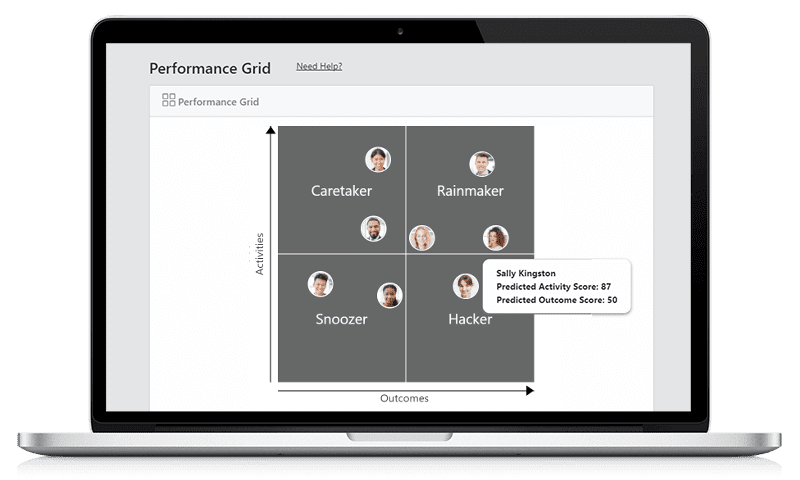Why Coach?
Leadership and leading people in any organization are all about supporting employee performance. This support will deliver higher levels of activity and outcomes and ensure they are at an optimal level to achieve strategic business goals. What separates leaders who gain commitment from their staff and those who gain compliance, is coaching. Effective leaders don’t supervise or manage staff they coach and lead them to success.
Let me explain.
- Managing: is all about solving the problem. This is a more directive approach with the manager telling the employee what to do next.
- Coaching: is a facilitated approach to guide team members to find the answer for themselves. It’s about raising their self-awareness of the need to do something different and self-managing the pursuit of that course of action.
What Tools are Required?
Feedback and goal setting are the two key components of coaching. They set clear expectations about performance levels, the pathway to success, and if they are on track to achieve their metrics. Setting targets establishes a clear baseline for performance. Monitoring progress against the target gives staff the reassurance of the value of their activities. Making performance visible via leaderboards on a TV also allows them to see how their activity performance ranks against peers and to make the necessary adjustments.
The ability to collect this performance information across multiple metrics can make it easier for leaders to determine an individual’s organizational contribution and prompt coaching opportunities.
While the axis and name may vary, a grid essentially assigns people to a quadrant based on their performance. In all grids, the top right quadrant is the place to be and represents those individuals whose performance is seen as optimized. Those individuals in the bottom left quadrant represent the “problem people”.
The performance grid provides a feedback mechanism about team members. It allows their manager to see who should be applauded (those in the top right quadrant) and who may need to find an alternate career (those in the bottom left quadrant). Those individuals in either the bottom right or top left quadrants can be coached to move through the grid to the top right quadrant.
Spinify Performance Grid Explained.
Spinify uses information from all the leaderboards you run, you determine which are activity leaderboards and which are outcome leaderboards, to collect performance information on staff and populate the two by two grid.
We all know that activities drive outcomes and the axis of the Spinify Performance Grid shows these key areas. Activities are tasks such as phone calls, meeting appointments, emails, or quotes sent to customers. Outcomes are the end result of doing the expected amount of activities be that sales, deals, closeouts, or settlements.
So those individuals in the top right quadrant who are doing the most activities and delivering the expected outcomes are called Rain Makers as they are delivering to the expectations of the organization and their contributions are growing revenue, sales, and customers.
Those in the top left-hand quadrant are doing the expected level of activities however are falling short of the required outcomes. These people are called Caretakers, they do the required activities and tasks without really putting themselves at any risk of rejection by asking for a deal closeout. Coaching is critical for these individuals to be successful. On the bright side, they offer the best potential for organizations to uplift outcomes such as sales and revenue. It might be they need help and direction on closing customer deals or fully understanding the importance of their contribution to the bigger picture company results.
Individuals in the bottom right quadrant are making the outcomes expected without the required activities. While on the surface this may appear to be a good thing it should ring alarm bells. Known as Hackers, these individuals are probably failing to update data sources such as your CRM, failing to delegate tasks or be a team player. These individuals (and they will be highly self-focused) need to be shown the value of being a team player and nurturing other members of the team. They also need to understand the importance of following company processes.
Team members in the bottom left quadrant have low performance in both activities and outcomes. While new staff may find themselves in this quadrant as they learn the products and processes and people associated with their new role, those who fail to move from this quadrant are almost certainly in the wrong role or with the wrong employer. They are Snoozers and potentially disengaged employees with all the associated negative attributes of absenteeism and distractive, disruptive behaviors.
Coaching Strategies per Quadrant
Astute managers adjust their coaching style and activities based on the quadrant individual team members are in. In a nutshell, the coaching approach would be as follows:
- Rain Makers – applaud their efforts, recognize them publicly for their achievements and reward them well for their contributions
- Caretakers – coach, coach, and then do some more coaching. The ROI on time invested with this group is significant
- Hackers – check their process and people skills. If these can’t be changed it may be best for them to leave your employ
- Snoozers – move the new employees through the grid towards Rain Maker with good onboarding and training. Help the long stayers in this quadrant seek new opportunities.
Conclusion
Performance information is at the core of coaching interaction. Driving performance and change through coaching of employees requires a fair amount of rigor on the part of the leader to communicate frequently, define clear goals, and set proper expectations. Our blog article How to Use Leaderboards for Business Coaching is a really good starting point for learning more about leaderboards and coaching. Fortunately, leaderboards can automate this process for you allowing time to be invested in coaching those team members who will achieve the business results you want. Increasing the time spent coaching will have a multiplier effect in results delivered by employees who now feel valued and supported to be more successful.
For more news and updates, follow us on our social media profiles: LinkedIn and Twitter




